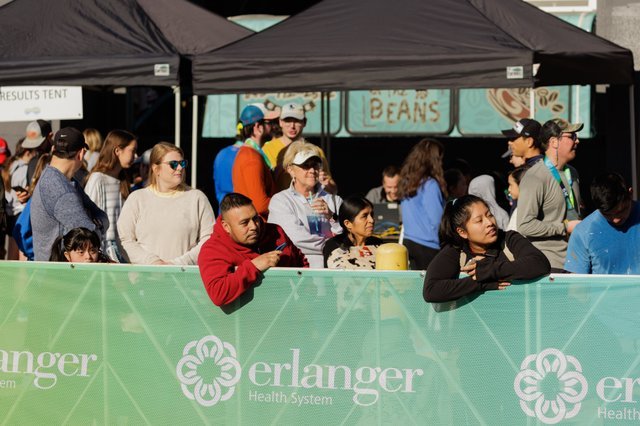News
Brainwave Frequencies:
To determine the type and intensity of activity in the various areas of the brain, EEG researchers translate electrical signals into discrete frequency bands through spectral analysis. Fast Fourier Transformation (FFT) in EEG research is used to divide the signals from various sensors into measures of power in five distinct frequency ranges: Delta (δ = .5 - 3 Hz), Theta (φ = 4 - 7 Hz), Alpha (α = 8 - 15 Hz), Beta (β 16 - 31 Hz), and Gamma (γ = 32 - 100 Hz). Delta is most often associated with sleep or subdued levels of brain activity, but can also be pronounced in people with depression or ADHD (Clarke et al., 2008). Theta waves indicate mind-wandering or inward attention. This frequency has been associated with creativity and ideation, as it allows for an open flow of ideas (Purves, 2012). Alpha waves represent the mind’s natural state of readiness or non-arousal, indicating a relaxed state of mind. The Beta frequency denotes arousal and mental engagement. The final category, Gamma, has been associated with high-level mental tasks, and conceptually linked to flow theory (Lutz et al., 2004).
Brain Mapping
Though neuroscientists are only beginning to unlock the brain’s mysteries, there is general consensus regarding the functions associated with brain lobes (Purves, 2012). The posterior areas, for instance, are associated with vision and image perception (occipital lobe), processing sensations from the muscles and skin (parietal lobe), and evaluation of weight, texture and sensations (somatosensory area). Temporal lobes process short-term memories and equilibrium. The frontal lobe processes executive functions such as judgment, planning, concentration, and emotional expression. These higher-order processes are associated with learning, decision-making, and leadership. Finally, the amygdala, buried deep beneath the parietal and temporal lobes, processes pain, hunger, and fear.
Brainwave Measures:
New discoveries linking various brainwaves to areas of the brain are documented daily, and the understanding of these connections will likely undergo much change in the coming years. For the current project, the following cognitive states were assessed:
Focus (Red line):
A general measure of mental engagement evidenced by Beta activity in the frontal lobe (Coelli et al., 2015).
Excitement/Anxiety (Yellow Line):
Associated with high-Beta and Gamma waves in the temporal and parietal lobes, likely translated from the amygdyla underneath (Oathes et al., 2008). This could indicate very high levels of performance (if combined with high levels of approach motivation). However, it is commonly associated with tunnel vision, wasted energy, and lower long-term performance.
Approach motivation (AM or Positive FAS; Orange Line):
A participant with AM presents more high-frequency waves (or an absence of Alpha activity) on the left frontal lobe than the right (i.e. frontal assymetry or FAS). AM is related to high levels of arousal, which may indicate positive emotion (e.g. happiness, excitement) but could also indicate aggression or anger (Coelli et al., 2015). In general, spikes above the midline can be interpreted as “I like this” or “I’m going for it”. Drops below indicate the opposite.
Meditation/Inward attention (Green Line):
Relaxation is often accompanied with Theta waves during a daydreaming or meditative experience. Theta in the frontal and temporal lobes coupled with Alpha in the posterior is a good indicator of meditative state (Lagopoulos et al., 2009). A meditative state really equates with a lack of outward focus and a shift to inward attention (e.g. self talk, inward dialogue). It shouldn’t be confused with intentional meditative practice.
Things to Watch for in the readouts:
Excitement: Most runners have spikes in excitement when anticipating the race start, whcn going through areas with screaming crowds, or at other random occurrences (seeing friends, needing a bathroom, etc.). You may also see a spike during the last mile when finishing was immanent.
Motivation: This line spikes up when you are enjoying the run and when you feel driven to push it. It dips with pain or fatigue. If it dips at the same time as a spike in anxiety, you weren’t having fun at that moment.
Meditation: This is associated with “flow” and usually spikes when you hit your groove and stop thinking about pacing, crowds, etc. For the full marathon, it typically appears at about mile 12-13 and may remain until the end of the race, when participants snap out of their zone and realize they are almost done.
Focus: This is up and down the entire time, but often spikes due to pain, awareness of pacing or time splits, or areas of the course that demand attention. Focus and excitement often use up valuable resources, so less is generally better.

References
Cheron, G. (2016). How to Measure the Psychological “Flow”? A Neuroscience Perspective. Frontiers in Psychology, 7. https://doi.org/10.3389/fpsyg....
Clarke, A. R., Barry, R. J., Heaven, P. C. L., McCarthy, R., Selikowitz, M., & Byrne, M. K. (2008). EEG in adults with Attention-Deficit/Hyperactivity Disorder. International Journal of Psychophysiology, 70(3), 176–183. https://doi.org/10.1016/j.ijpsycho.2008.07.001
Coelli, S., Sclocco, R., Barbieri, R., Reni, G., Zucca, C., & Bianchi, A. M. (2015). EEG-based index for engagement level monitoring during sustained attention (pp. 1512–1515). IEEE. https://doi.org/10.1109/EMBC.2015.7318658
Lagopoulos, J., Xu, J., Rasmussen, I., Vik, A., Malhi, G. S., Eliassen, C. F., … Ellingsen, Ø. (2009). Increased theta and alpha EEG activity during nondirective meditation. Journal of Alternative and Complementary Medicine (New York, N.Y.), 15(11), 1187–1192. https://doi.org/10.1089/acm.2009.0113
Lutz, A., Greischar, L. L., Rawlings, N. B., Ricard, M., & Davidson, R. J. (2004). Long-term meditators self-induce high-amplitude gamma synchrony during mental practice. Proceedings of the National Academy of Sciences of the United States of America, 101(46), 16369–16373. https://doi.org/10.1073/pnas.0407401101
Oathes, D. J., Ray, W. J., Yamasaki, A. S., Borkovec, T. D., Castonguay, L. G., Newman, M. G., & Nitschke, J. (2008). Worry, generalized anxiety disorder, and emotion: Evidence from the EEG gamma band. Bilogical Psychology, 79, 165–170.
Purves, D. (2012). Neuroscience. Sinauer Associates. Retrieved from https://books.google.com/books?id=B5YXRAAACAAJ




